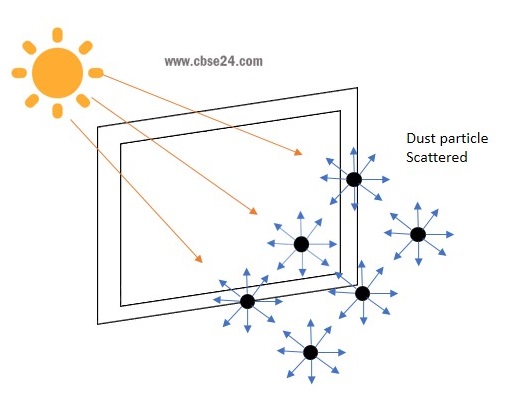Scattering of light means throwing light in various random directions.
Tyndall Effect:-
The scattering of light by particles in its path is called the Tyndall effect. When a beam of light enters a dusty room through a window, its path becomes visible to us. This is because the tiny dust particle present in the air of the room scatter the beam of light all around the room.
Tyndall discovered that when white light consisting of seven colours is passed through a clear liquid having small suspended particles in it, then the blue colour of white light having a shorter wavelength is scattered much more than the red colour having a longer wavelength.
The blue coloured light present in white sunlight is scattered much more easily than the red light.
The colour of the scattered light depends on the size of the scattering particles in the atmosphere.
- The larger particles of dust and water droplets present in the atmosphere scatter the light as such due to which the scattered light also appears white.
- The extremely small particles such as the air molecules present in the atmosphere scatter mainly the blue light present in the white sunlight.
- If the earth had no atmosphere, there would have been no scattering of sunlight at all. In that case, no light from the sky would have entered our eyes and the sky would be looked dark and black to us.
- In outer space, the sky looks dark and black instead of blue because there is no atmosphere in outer space.
Question:-Why the sun appears red at sunrise and sunset?




